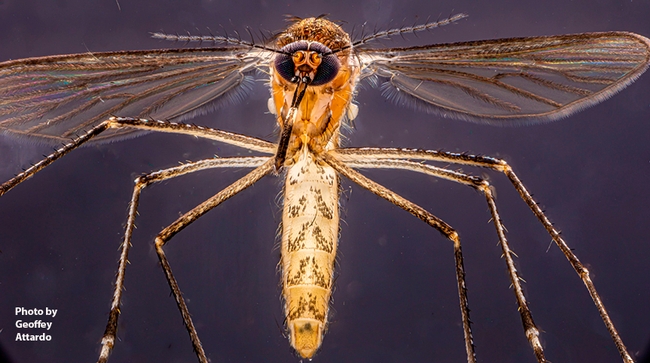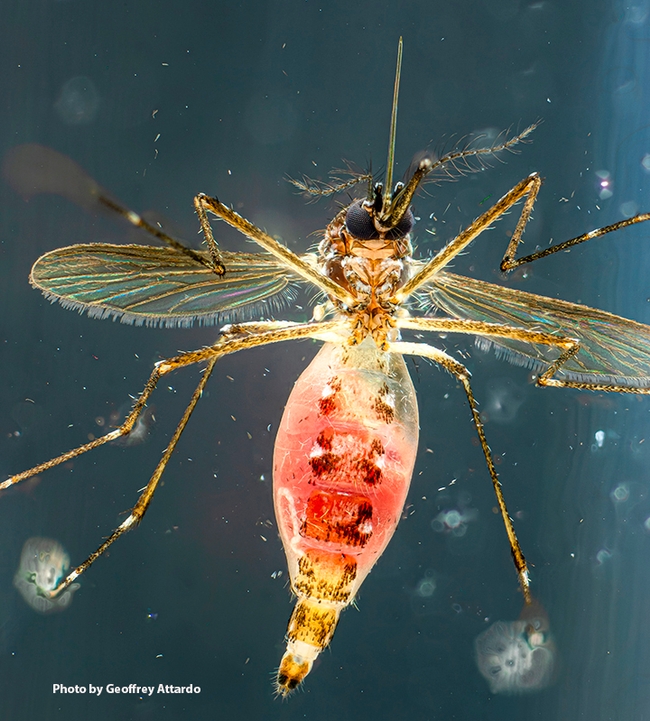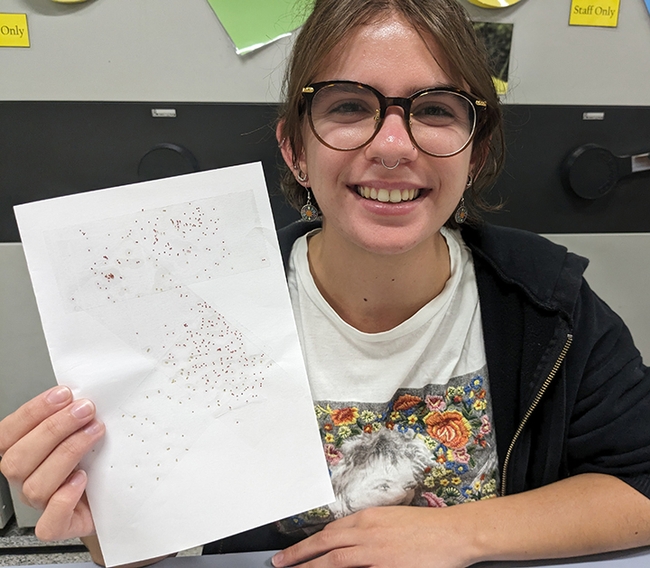- Author: Kathy Keatley Garvey
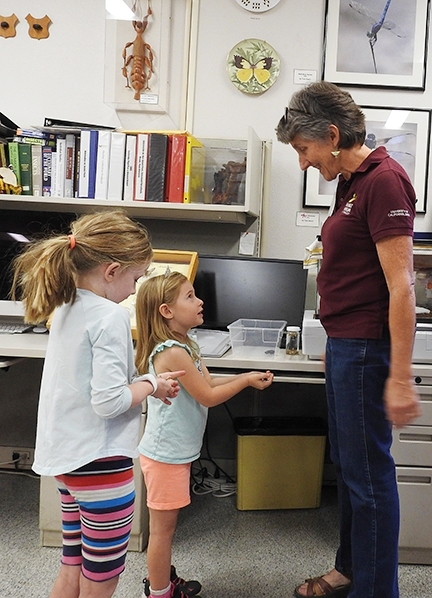
The event, set for Saturday, Feb. 10, will feature 10 museums or collections:
- Anthropology Museum, 328 Young Hall and grounds, open from noon to 4 p.m.
- Arboretum and Public Garden, Habitat Gardens in the Environmental GATEway, adjacent to the Arboretum Teaching Nursery on Garrod Drive, 10 a.m. to 2 p.m.
- Bohart Museum of Entomology, Room 1124 and main hall of the Academic Surge Building, 455 Crocker Lane, 10 a.m. to 2 p.m.
- Botanical Conservatory, the greenhouses along Kleiber Hall Drive, 10 a.m. to 2 p.m.
- California Raptor Center, 1340 Equine Lane, off Old Davis Road, 9 a.m. to 3 p.m.
- Center for Plant Diversity, Katherine Esau Science Hall off Kleiber Hall Drive, 10 a.m. to 2 p.m.
- Nematode Collection, Katherine Esau Science Hall, off Kleiber Hall Drive, 10 am. to 2 p.m..
- Museum of Wildlife and Fish Biology, Room 1394, Academic Surge Building, 455 Crocker Lane, 10 a.m. to 2 p.m.
- Paleontology Collection, Department of Earth and Planetary Sciences, 1309 Earth and Physical Sciences Building, 434 LaRue Road, 10 a.m. to 2 p.m.
- Phaff Yeast Culture Collection, Robert Mondavi Institute Brewery and Food Processing facility, Old Davis Road, 10 a.m. to 2 p.m.
Each year more than 200 volunteers--students, staff and faculty--from across campus help more 4,000 visitors--including other UC Davis students, staff and faculty--"learn about biodiversity through our amazing biological collections," said UC Davis Biodiversity Museum Day chair Tabatha Yang, education and outreach coordinator for the Bohart Museum of Entomology.
The Bohart Museum founded UC Davis Biodiversity Museum Day.
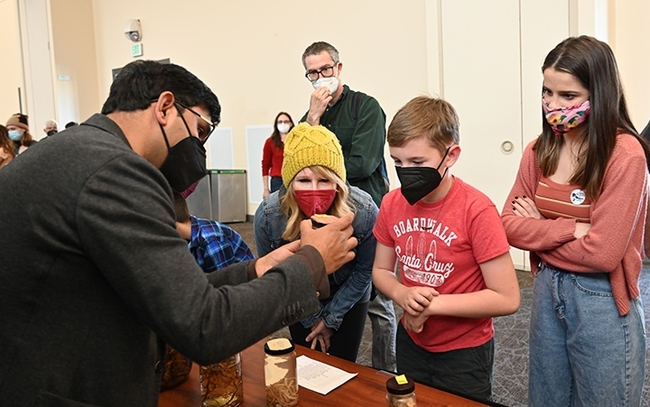
- Author: Kathy Keatley Garvey
Seminar coordinator and associate professor Brian Johnson has announced the list of UC Davis Department of Entomology and Nematology seminars for the winter quarter, from Jan. 8 through March 11.
All seminars will be on Mondays at 4:10 p.m. in Room 122 of Briggs Hall and also will be on Zoom.The Zoom link: https://ucdavis.zoom.us/j/95882849672.
No seminar will take place on Monday, Jan. 15, which is Martin Luther King Jr. Day, a university holiday.
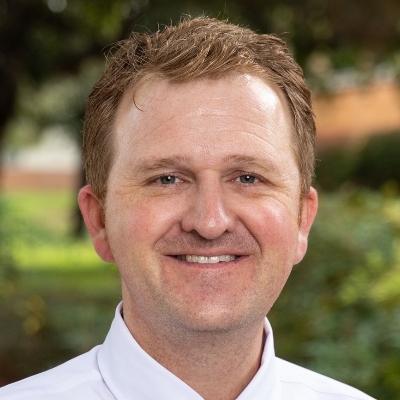
Adler Dillman
Professor of parasitology and nematology, and chair of the Department of Nematology, UC Riverside
Title: "Nematode Parasitism of Insects with Toxic Cardenolides"
Abstract: (Partial) "Target-site insensitivity (TSI) is an important mechanism of animal resistance to toxins. TSI evolved in parallel in the monarch butterfly and other insects that specialize on milkweeds and is thought to have facilitated sequestration of cardiac glycosides (CGs) that may protect these insects from predation and parasitism....Our results suggest that a molecular evolutionary cascade of parallel substitutions across hosts and parasites, last sharing common ancestry 600 million years ago, may shape multitropic interactions across plant communities."
Biography: He holds a bachelor's degree in microbiology from Brigham Young University (2006) and a doctorate in genetics (2013) from the California Institute of Technology.
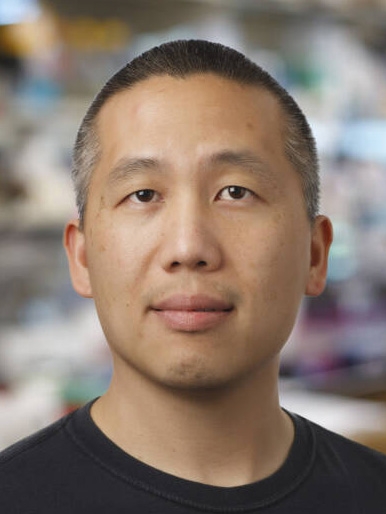
William Ja
Associate professor, Herbert Wertheim Scripps UF Institute for Biomedical Innovation and Technology in Jupiter, Florida.
Title: "Eat, Excrete, & Die: Regulation of Homeostatic Behaviors and Aging in Drosophila"
Abstract: "The Ja lab uses the fruit fly, Drosophila melanogaster, as a model organism for uncovering the genetic and neuronal mechanisms that drive aging, behavior, and disease. Recently developed tools allow us to track fly feeding behavior with unparalleled resolution. These tools facilitate the identification of genes and circuits that regulate food intake at diverse time scales, including studies of: 1) meal intake; 2) daily (circadian) feeding rhythms; and 3) compensatory feeding in response to high or low quality food. Our studies of feeding behavior and nutrition also inform aging interventions, including a novel caloric restriction paradigm and an intermittent fasting regime that extends fly life through the stimulation of circadian-regulated autophagy. Overall, our fly studies shed light on basic neurobiological principles that drive animal behavior, providing insights that potentially inform the development of conserved therapeutic strategies."
Biography: Ja received his chemistry degree at UC Berkeley, working with Richard Mathies and Alex Glazer on DNA sequencing technologies. He pursued doctoral studies at the California Institute of Technology with Rich Roberts, utilizing mRNA display technology to identify modulators of G protein signaling. Ja remained at Cal Tech as a postdoctoral scholar to work with Seymour Benzer on developing longevity ‘drugs' in Drosophila. His laboratory focuses on aging and nutrition, animal behavior, and host-microbiome interactions.
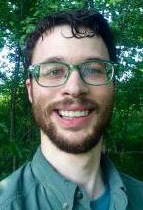
Todd Johnson
Assistant professor of forest entomology, Louisiana State University
Title: "Characterizing Ecological Interactions of Arthropods in Forests under Global Change'
Abstract: "Forests cover approximately 30% of the Earth's landmass and provide important ecosystem services that include food, fuel, and timber, as well as habitat for diverse organisms. Threats posed to forests by invasive and pestiferous species are rapidly growing. Global change, an umbrella term that includes may human-mediated processes such as climate change and international trade, is altering the structure and functioning of forests. Our recently formed research group studies how natural variation impacts the outcomes of interactions between trees, herbivores, and the natural enemies of herbivores. My seminar will provide an overview of our ongoing and developing studies to better understand how variation in chemistry across the landscape shapes the fitness of woodboring insects, and how this variation can be harnessed to optimize management of forest ecosystems."
Biography: His research group studies the behavioral and chemical ecology of forest arthropods, with an emphasis on building fundamental knowledge that can further our understanding and management of natural and managed ecosystems. Johnson received his bachelor's degree in biology from Moravian College, his master's degree in entomology from the University of Wisconsin-Madison, and his doctorate from the University of Illinois at Urbana-Champaign. Prior to accepting his position at LSU in the fall of 2022, he was a postdoctoral research associate at the University of New Hampshire.
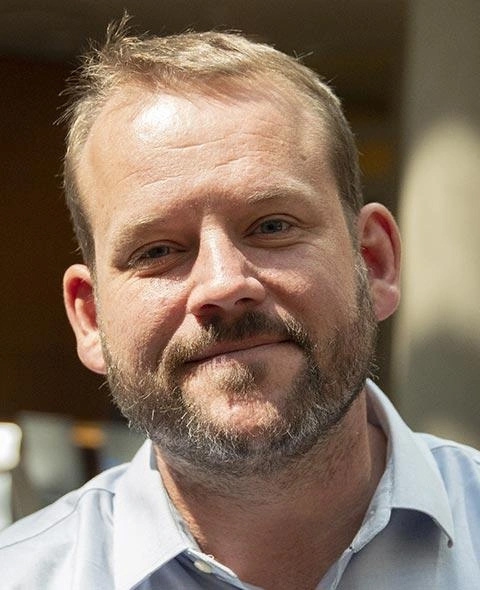
Orie Shafer
Professor of biology and cognitive neuroscience, City University of New York
Title: "Circadian and Homeostatic Regulation of Fly Sleep"
Abstract: "Sleep-like states are ubiquitous in the animal kingdom and are regulated by two distinct forms of regulation, circadian and homeostatic. Homeostatic mechanisms promote increases in sleep pressure during prolonged wakefulness. Circadian mechanisms determine the likelihood of sleep, increasing or decreasing its probability across the day. Though the molecular and neural mechanisms of circadian timekeeping are relatively well-understood, much less is known about the mechanistic basis of sleep homeostasis. The fly Drosophila melanogaster is a powerful model organism for the studying of sleep regulation. In this talk I will describe recent work from my lab examining how circadian timekeeping and sleep homeostasis operate in this fly and how these two regulatory processes converge to produce the proper timing and amount of sleep."
Biography: He received his doctorate in biology from the University of Washington, and served as a postdoctoral researcher at Washington University School of Medicine, St. Louis.
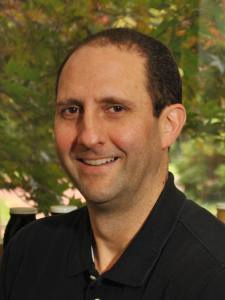
Peter Piermarini
Professor and associate chair of entomology, The Ohio State University, Wooster
Title: "Discovery of Novel Chemical Tools for Controlling the Most Dangerous Animals on Earth"
Abstract: "Mosquitoes are considered the most dangerous animals on Earth due to the deadly pathogens they transmit to humans. Controlling the transmission of mosquito-borne diseases often relies on chemical tools that prevent mosquitoes from biting humans (e.g., insecticides, repellents). However, the evolution of resistance in mosquitoes to commonly used control agents with similar modes of action has generated a need to discover novel chemistries for killing and/or repelling mosquitoes. To address this need, my lab is engaged in collaborative research that is discovering synthetic small molecules to disrupt novel physiological targets in mosquitoes and screening natural products for insecticidal and repellent activity against mosquitoes. My talk will summarize examples for each of these approaches and their potential for development into novel mosquito control tools."
Biography: He received his bachelor's degree in biology from James Madison University and doctorate in zoology from the University of Florida, before completing postdoctoral training at the Yale University School of Medicine and Cornell College of Veterinary Medicine. His laboratory studies the molecular physiology and toxicology of mosquitoes with the goal of discovering and developing insecticides with novel modes of action.
Monday, Feb. 26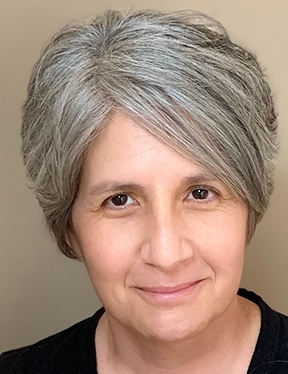
Professor and director of graduate programs, Department of Entomology and Plant Pathology, North Carolina State University
Title: "“Advances and Innovations in the Characterization of Molecular Interactions Between
Frankliniella occidentalis and Tomato Spotted Wilt Virus.”
Biography: Dorith (pronounced Doreet) Rotenberg received three degrees from the University of Wisconsin-Madison: bachelor of science degree in biochemistry and her master's and doctorate in plant pathology. She is a professor in the Department of Entomology and Plant Pathology at North Carolina State University (NCSU) and the director of Graduate Programs in Plant Pathology. She co-directs the NCSU Plant Virus Vector Interactions Lab. Her foundational research initiatives center on the long-range goal of identifying and characterizing insect vector determinants of plant virus transmission to crop plants using a combination of ecological and genomics-based tools. Her research program has provided to the international science community vector genome, transcriptome, and proteome sequence resources to dig deeply into commonly-shared questions revolving around insect evolution, development, and transmission biology.
Abstract: "Arthropod-transmitted plant pathogens cause crippling monetary losses to U.S. and global economies. Tomato spotted wilt virus (Order Bunyavirales, family Tospoviridae, genus Orthotospovirus) is one of those pathogens, and it is transmitted in a circulative-propagative manner by Frankliniella occidentalis, the principal thrips vector. The overarching goal of my research program is to contribute fundamental knowledge towards developing alternative, effective and innovative tools for diminishing vector-transmitted crop diseases. My lab has been on the forefront of generating and sharing vector ‘omics resources to enable the identification and characterization of molecular determinants of vector competence as a means to specifically disrupt the virus transmission cycle. Using a combination of proteomic, transcriptomic and functional tools developed by my team and collaborators for F. occidentalis and TSWV, we aim to drill down on gut proteins associated with thrips host response to virus activities (indirect interactions) and/or gut proteins that physically interact with the viral attachment protein (GN) (direct). My talk will cover research advances made towards identifying and functionally characterizing two promising gut-expressed proteins, and new tools to interrogate F. occidentalis genes associated with virus transmission."
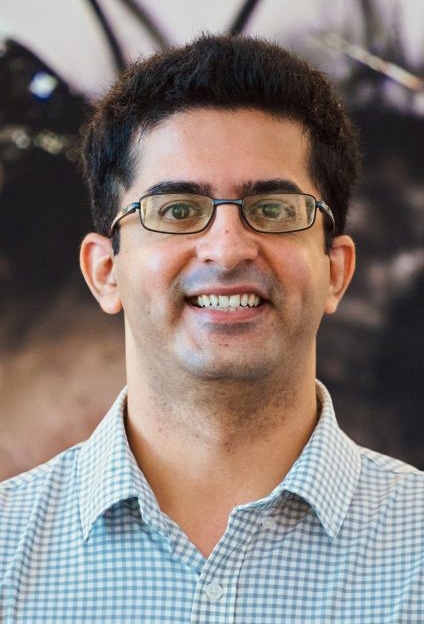
Salil Bidaye
Research Group Leader, Max Planck Florida Institute for Neuroscience
Title: "How Flies Control How They Walk by Knowing When and How to Stop"
Abstract: "Walking is a complex motor program involving coordinated and distributed activity across the brain and the spinal cord. Halting appropriately at the correct time is a critical but often overlooked component of walking control. While recent studies have delineated specific genetically defined neuronal populations in the mouse brainstem that drive different types of halting, the underlying neural circuit mechanisms responsible for overruling the competing walking-state neural activity to generate context-appropriate halting, remain unclear. Here, we elucidate two fundamental mechanisms by which Drosophila implement context-appropriate halting. The first mechanism (“walk-OFF” mechanism) relies on GABAergic neurons that inhibit specific descending walking commands in the brain, while the second mechanism (“brake” mechanism) relies on excitatory cholinergic neurons in the nerve-cord that lead to an active arrest of stepping movements. Using connectome-informed models and functional studies, we show that two neuronal types that deploy the “walk-OFF” mechanism inhibit distinct populations of walking-promotion neurons, leading to differential halting of forward-walking or steering. The “brake” neurons on the other hand, override all walking commands by simultaneously inhibiting descending walking promoting pathways and increasing the resistance at the leg-joints leading to an arrest of leg movements in the stance phase of walking. We characterized two ethologically relevant behavioral contexts in which the distinct halting mechanisms were used by the animal in a mutually exclusive manner: the “walk-OFF” pathway was engaged for halting during feeding, and the “brake” pathway was engaged for halting during grooming. To our knowledge, this represents the first mechanistic understanding of halting in fruit-flies and hence a major step in our larger goal of uncovering the fundamental principles governing walking control in animals."
Biography: Bidaye studies neuronal control of locomotion."While a graduate student in Barry Dickson's lab in the beautiful city of Vienna, Austria, as I observed fruit-flies chasing each other during courtship, I got hooked on to the intricate control that comprises insect walking. This fascination kindled by powerful fly genetic tools, has led me to persistently device new behavioral assays and neural recording techniques, aimed at elucidating the fundamental control mechanisms that underlie the exquisite locomotor control that is commonplace in all animals."
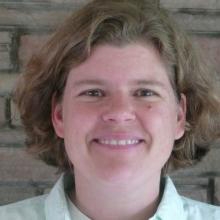
Inga Zasada
Research plant pathologist, USDA-ARS Horticultural Crops Research Laboratory, Corvallis, Ore.
Title: "How an Applied Nematologist Uses Genomic Tools to Address Plant-Parasitic Nematode Research"
Abstract: "Advancements in molecular plant pathology have created an environment in which applied, field-based research programs have the opportunity to utilize genomic tools in their programs. There are potential rewards for incorporating genomics into a research program including enhanced nematode diagnostics, population genetics of infestations, and novel biological discoveries. However, along with these rewards come many considerations including cost, tempered expectations, and the capacity to generate and analyze data. A cautionary tale of such a journey will be presented. Efforts to characterize the nematode microbiomes from a diversity of plant-parasitic nematodes, understand the population genetics of a potato cyst nematode infestation, and sequence and annotate nematodes genomes will be presented to highlight the rewards and challenges of this type of research. Underpinning all of these efforts is the need to establish and maintain productive collaborations with scientists with diverse backgrounds."
Biography: Inga Zasada is a research plant pathologist with USDA-ARS. She received her doctorate in plant pathology from UC Davis. She has spent her entire career with USDA-ARS, first in Beltsville, MD and now in Corvallis, OR. Her research program focuses on the management of plant-parasitic nematodes in raspberry, wine grapes, potatoes and other high value crops.
For Zoom technical issues, contact seminar coordinator Brian Johnson, associate professor, at brnjohnson@ucdavis.edu.
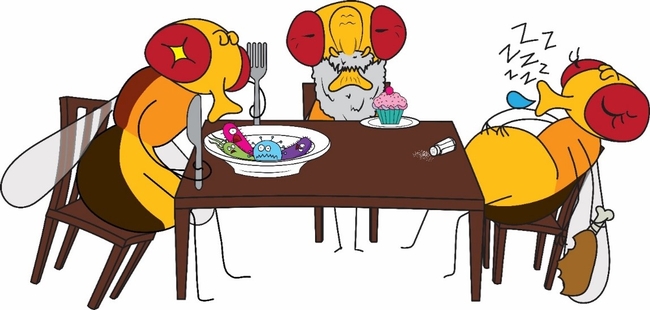
- Author: Kathy Keatley Garvey
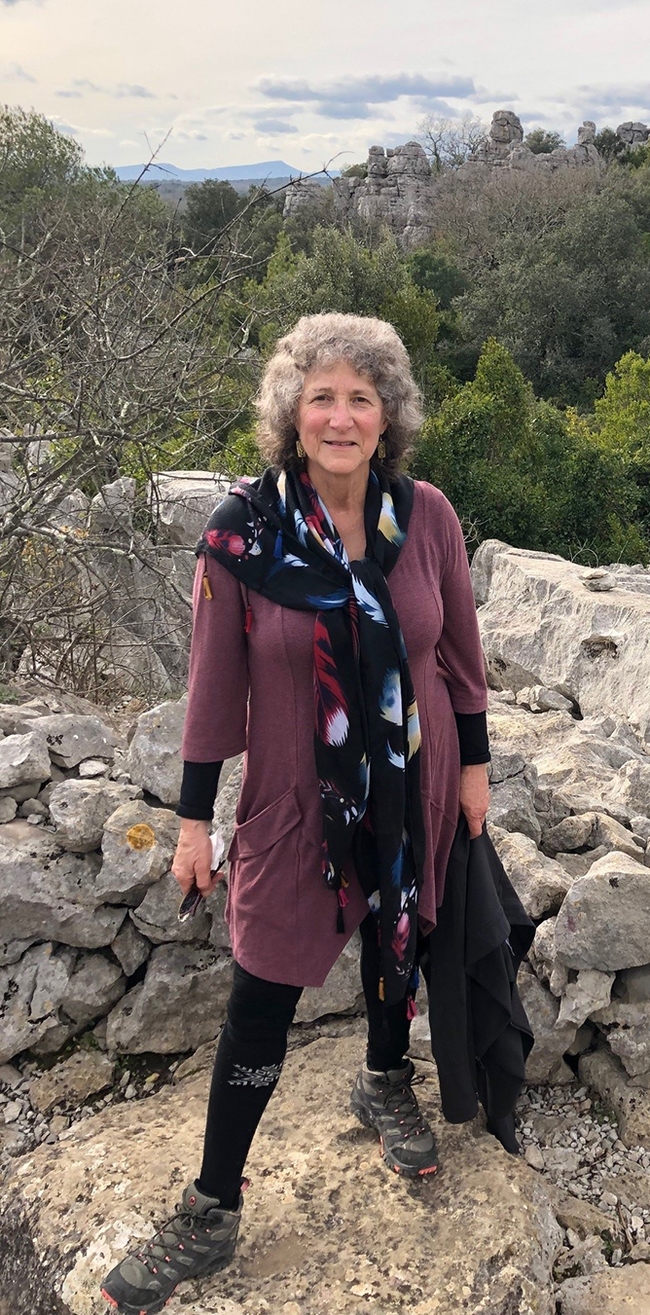
It did: their research revealed how TSWV (family Tospoviridae, order Bunyavirales) packages its RNA genome, a crucial step in virus infection.
Their newly published research, “The Genome of a Bunyavirus Cannot be Defined at the Level of the Viral Particle But Only at the Scale of the Viral Population,” appears in the current edition of the Proceedings of the National Academy of Sciences (PNAS).
The 18-member research team included scientists primarily from the French National Research Institute for Agriculture, Food and Environment (INRAE) at the Campus International de Baillarguet, Montpellier; Department of Entomology, University of Wisconsin; and the Department of Entomology and Nematology, University of California, Davis.
“Our work showed the genome of TSWV can only be defined at the population level, pointing at emerging properties when viral particles infect plants in groups,” said a key author Stéphane Blanc, research director of INRAE's Biology and Genetics of Plant-Pathogen Interactions. “As most virions contain an incomplete genome, TSWV is a multi-component viral system, where co-infection and complementation are key in the life cycle. These findings open a myriad of possibly distinct properties depending on the genetic composition of the group of virions co-infecting a cell.”
“The most challenging part of this work was to create a protocol reliably quantifying the two polarities of each segment,” said lead author Michel Yvon of INRAE. “The next important advance will be to demonstrate that co-infection of cells by a group of particles is key to the spread of infection.”
Ullman, an international authority on orthotospoviruses and one of the four main authors, took a sabbatical to work on the project. “My interest was in understanding how TSWV packaged its RNA genome,” she said. “While this sounds like a simple goal, it is quite complex because TSWV has negative sense and ambisense viral strands and many research tools common to studying other viruses, such as infectious clones were not available.”
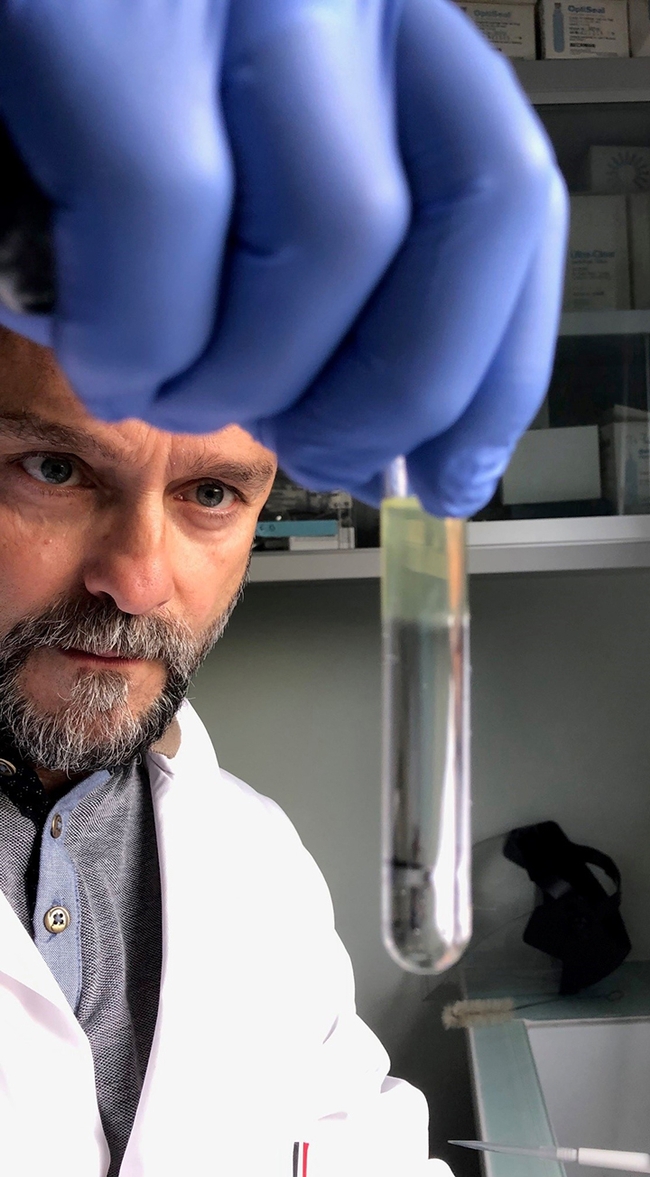
“It was a delight to work with the fantastic team of scientists that Stéphane assembled, all very talented with skills in virology, cryoelectron microscopy and nanopore PCR,” Ullman commented. “I cannot imagine a more talented and diverse group of people to conduct this difficult work. I learned a great deal about virus purification from Michel Yvon, whose leadership, skills in virology, and patient teaching really moved our project forward."
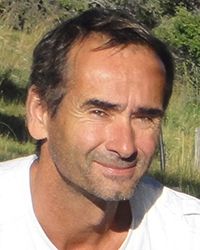
German, professor emeritus and former chair of both the Departments of Plant Pathology and Entomology at the University of Wisconsin, died Aug. 27, 2023 at age 82.
“I am indebted to my husband, Jean-Marc Leininger who frequently drove me to the laboratory in Avignon where I was able to rear thousands of virus-infected plants and to store TSWV isolate,” Ullman added. “Jean-Marc not only transported me and my virus specimens, but also learned to mechanically inoculate plants and helped with every inoculation and virus harvest.”
UC Davis postdoctoral scholar Sulley Ben-Mahmoud of the Ullman lab was among the co-authors.
Funding was provided by grants from Montpellier University of Excellence (MUSE); Floriculture and Nursery Research Initiative, U.S. Department of Agriculture, Agricultural Research Service (USDA-ARS); and the Fulbright Scholar Program. The authors also acknowledged support from
- Santé des Plantes et Environnementor Plant Health and Environment (SPE)
- Centre National de la Recherche Scientifique (CNRS)
- Institute of Research for Development (IRD)
- Institut national de la santé et de la recherche médicale (INSERM)
- Centre for International Cooperation in Agronomic Research for Development (CIRAD)
- Plant Health Institute of Montpelier (PHIM)
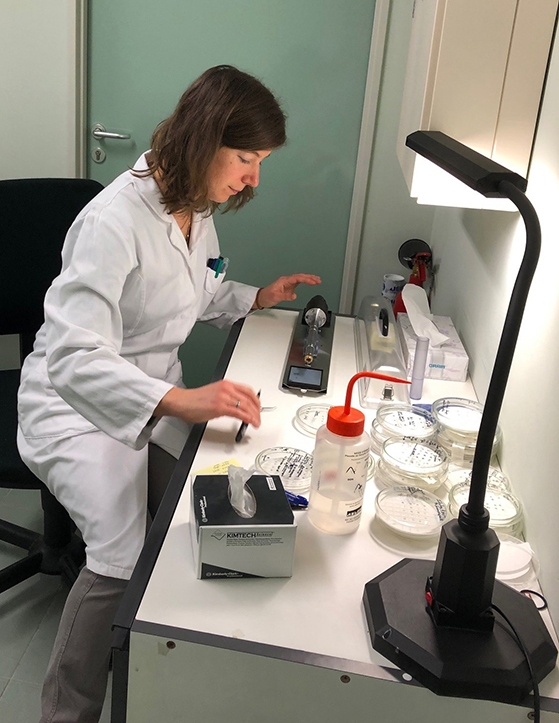
Ullman noted the importance of the research in her Fulbright application: “Sustainable management of insect-transmitted pathogens is a key concern for food production in France and the United States. Both countries grow many of the same crops and growers face similar challenges from insect-transmitted plant viruses. Current management strategies rely heavily on pesticides that may cause significant health and environmental concerns, including damage to bees and other pollinators, as shown with neonicotinoid pesticides. Clearly, better knowledge about these insect-transmitted viral systems…has potential to reduce pesticide use by providing novel and innovative technologies to manage orthotospoviruses and thrips in France and the United States.”
Ullman, a former chair of the Department of Entomology and a former associate dean of the UC Davis College of Agricultural and Environmental Sciences, anticipates strong research relationships between UC Davis and Montpellier that will lead to grant applications for international research and scholarly exchange opportunities for scientists, students, and post-doctoral scholars.
Significance
In their significance statement, the authors wrote: “Bunyaviruses infect animals, plants, fungi, and protists. Despite their importance, fundamental aspects of their biology as basic as the definition of their genome remain elusive. The viral genome consists of several negative or ambisense RNA segments, and virions often miss segments and/or package complementary strands. We formally quantify this heterogeneity on the species Tomato spotted wilt orthotospovirus. Within individual virus particles, the number, the identity, and the polarity of the segments are widely variable. In contrast, we show that a stable genetic composition is an emerging property of the viral population, each of the RNA segments/polarities accumulating reproducibly at a specific frequency. This resembles the genome formula of multipartite viruses, suggesting that bunyaviruses may also function as multicomponent viral systems.”
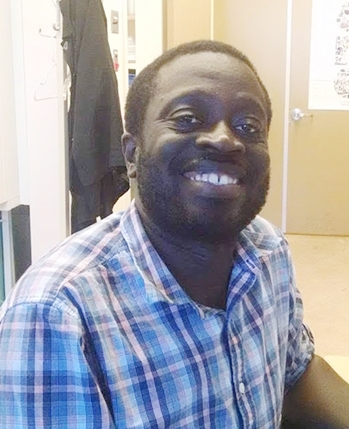
Their abstract: “Bunyaviruses are enveloped negative or ambisense single-stranded RNA viruses with a genome divided into several segments. The canonical view depicts each viral particle packaging one copy of each genomic segment in one polarity named the viral strand. Several opposing observations revealed nonequal ratios of the segments, uneven number of segments per virion, and even packaging of viral complementary strands. Unfortunately, these observations result from studies often addressing other questions, on distinct viral species, and not using accurate quantitative methods. Hence, what RNA segments and strands are packaged as the genome of any bunyavirus remains largely ambiguous. We addressed this issue by first investigating the virion size distribution and RNA content in populations of the tomato spotted wilt virus (TSWV) using microscopy and tomography. These revealed heterogeneity in viral particle volume and amount of RNA content, with a surprising lack of correlation between the two. Then, the ratios of all genomic segments and strands were established using RNA sequencing and qRT-PCR. Within virions, both plus and minus strands (but no mRNA) are packaged for each of the three L, M, and S segments, in reproducible nonequimolar proportions determined by those in total cell extracts. These results show that virions differ in their genomic content but together build up a highly reproducible genetic composition of the viral population. This resembles the genome formula described for multipartite viruses, with which some species of the order Bunyavirales may share some aspects of the way of life, particularly emerging properties at a supravirion scale.”
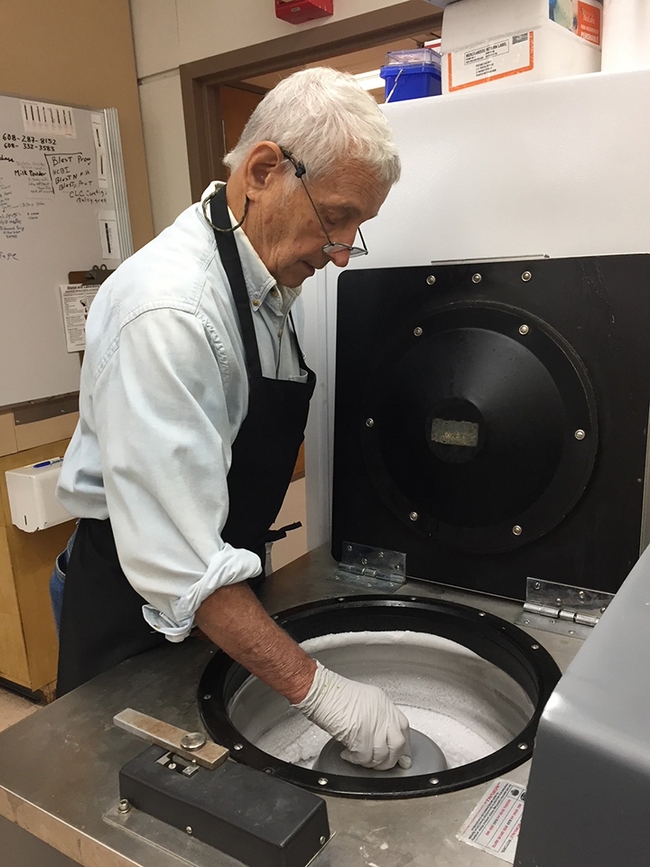
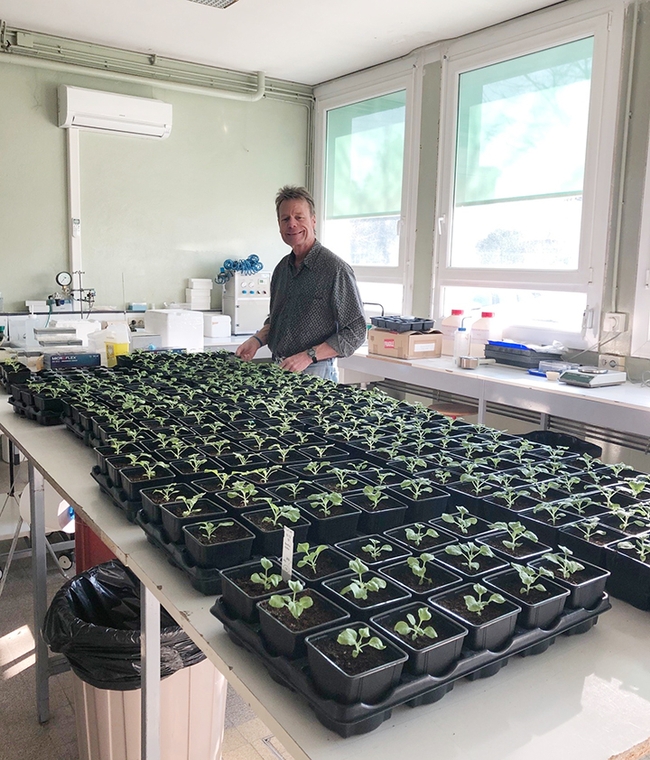
- Author: Kathy Keatley Garvey
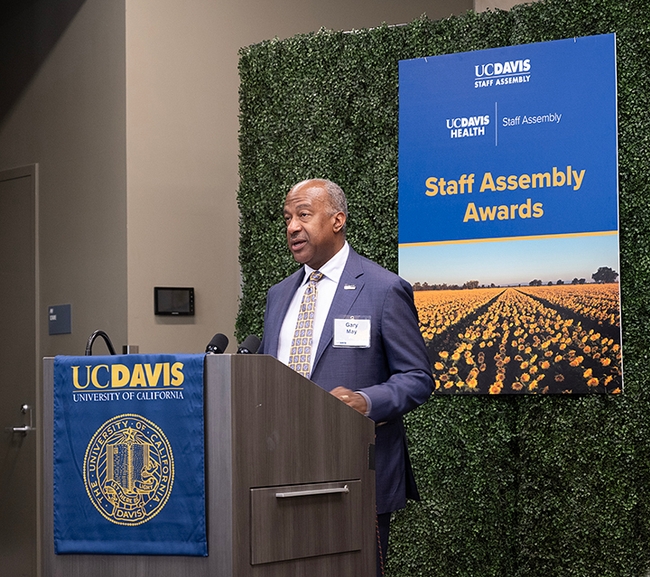
For "outstanding achievements and notable contributions in disseminating science-based beekeeping information since 2016,” the UC Davis-based California Master Beekeeper Program (CAMBP) won a 2023 UC Davis Staff Assembly “Citation of Excellence” and praise from Chancellor Gary May.
CAMBP director and founder Elina Lastro Niño, associate professor of Cooperative Extension and a member of UC Davis Department of Entomology and Nematology faculty, and co-program manager Wendy Mather share the Faculty-Staff Partnership Award.
Niño, UC Extension apiculturist since 2014, founded CAMBP in 2016. Mather joined the program in March of 2018. Also integral to the program is Kian Nikzad, but as a newer employee, was ineligible to be nominated.
The awards ceremony, held Sept. 12 in the International Center on campus, singled out “some of our most exceptional UC Davis individuals and teams,” Chancellor May said in his presentation.
Nikzad accepted the award on behalf of Niño, who was participating in Apimondia in Santiago, Chile, conferring with colleagues at the UC Davis Chile Life Sciences Innovation Center, a part of UC Davis Global Affairs. She was assisting them in developing a sustainable and environmentally friendly science-based beekeeping program to support the success of farmers and beekeepers at all economic levels.
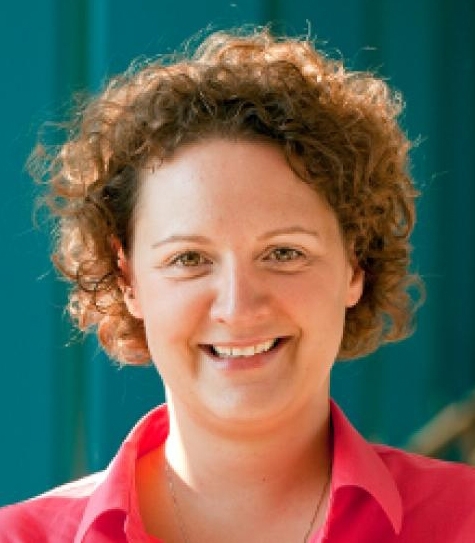
“I truly appreciate everything you do on a daily basis to make UC Davis a wonderful place,” the chancellor said. “You are the heart of UC Davis and I'm grateful for your dedication and hard work...you “contribute to our university's success and make UC Davis a more enjoyable, creative, inclusive and invigorating place to work.”
Nomination. Nominators of "The Bee Team" lauded Niño and Mather for providing a “program of learning, teaching, research, and public service, goes above and beyond in delivering comprehensive, science-based information about honey bees and honey bee health. They continually and consistently develop, improve, and refine their statewide curriculum that educates stewards in a train-the-trainer program to disseminate accurate, timely, and crucial information. Honey bees pollinate more than 30 California crops, including almonds, a $5 billion industry (no bees, no pollination, no almonds). Indeed, California produces more than a third of our country's vegetables and three-quarters of our fruits and nuts. However, colony losses are alarming due to pesticides, pests, predators and pathogens.”
As of Sept. 15, 2023, CAMBP has donated 34,000 hours of volunteer time and served 209,000 individuals in education, outreach and beekeeping mentorship. If a volunteer hour were to be calculated at $26.87, CAMBP has given $913,580 back to California in service of science-based beekeeping and honey bee health.
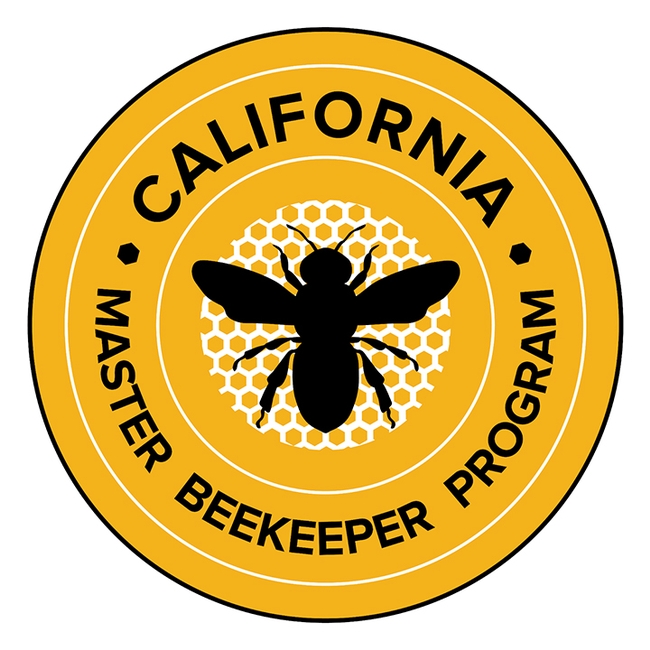
Scholarships. “No money?” wrote the nominators (Kathy Keatley Garvey, Nora Orozco and Tabatha Yang from the Department of Entomology and Nematology). “No problem. (CAMBP) has donated 12 scholarships, worth $250 each; helped novices who can't afford mentoring or equipment by linking them with veteran beekeepers; and is engaging in free bee removals--rescuing and relocating bees.”
Over the past year, CAMBP has developed and expanded its educational materials. This includes launching an asynchronous online course and in-person preparatory programs with its partners. It is updating safety materials and developing an Epinephrine auto-injector/CPR course, geared toward “everyone from 4-H beekeepers to novice beekeepers to the general public,” the nominators wrote.
CAMBP also teaches “schoolchildren about bees at specially guided garden tours at UC Davis, inspiring them “to care for the bees and plant nectar and pollen resources.”
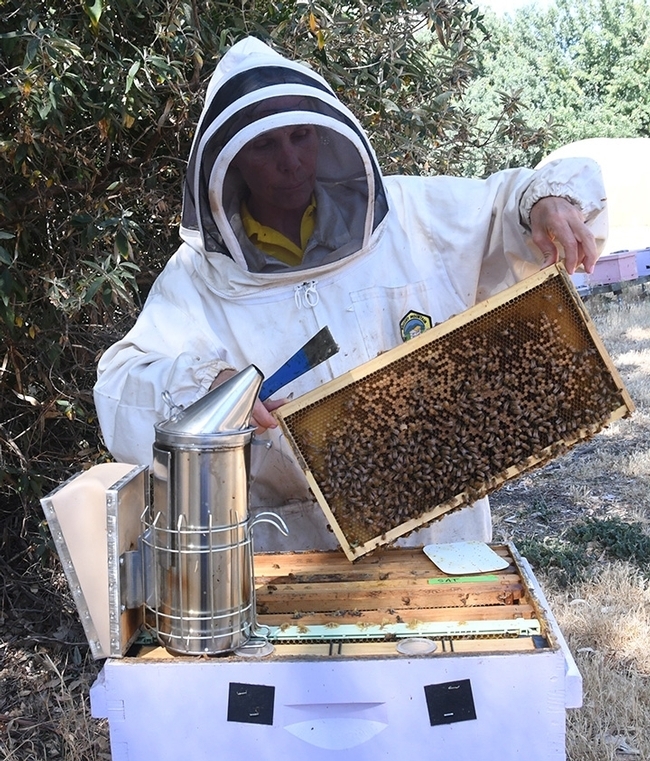
Its website, accessible to the public, offers a list of classes and knowledge-based information, including backyard beekeeping, bees in the neighborhood, bees and beekeeping regulations, defensive bees, live honey bee removals, and protecting pollinators.
“Bottom line,” the nominators concluded, “our ‘B' Team is really an ‘A' Team, an outstanding example of UC Davis teaching, research and service; a team providing exemplary service and contributions; and a team that creates and maintains high morale and embodies the Principles of Community.”
Joint Statement. In a joint statement following the awards ceremony, Mather and Nikzad said: “We share this award with our passionate and caring member volunteers. Our members are deeply committed to honey bee health, science-based beekeeping practices, and, most importantly, to each other. Their enthusiasm and dedication drive our mission forward. We wish to acknowledge Elina Niño for her visionary leadership; she has brought together various stakeholders, including growers, bee breeders, commercial, sideline, and hobbyist beekeepers, as well as the general public, through CAMBP, UC Davis, UC Agriculture and Natural Resources (UC ANR) and UC Cooperative Extension (UCCE). We missed having her at the ceremony.”
At the Staff Assembly ceremony, one other team received a Faculty-Staff Partnership Award Excellence Award: the Graduate Mentoring Initiative, comprised of Ambarish Kulkarni, faculty, Department of Chemical Engineering; Pamela Lein, faculty, Department of Molecular Bioscience; and Elizabeth Sturdy, staff, director of the Mentoring and Academic Success Initiative, Graduate Studies.
Serving as co-chairs of the 2023 Citations of Excellence Committee were Darolyn Striley, manager of the Office of Student Development, School of Medicine, and Mary Carrillo, business operations manager, Languages and Literatures.
Staff Assembly sponsors the annual Citations of Excellence awards program to provide recognition for UC Davis and UC Davis Health individual staff and staff teams “who have demonstrated outstanding achievement in one of the following areas: teaching, research, service, innovation, supervision, mentorship, team awards and faculty/staff partnership award.”
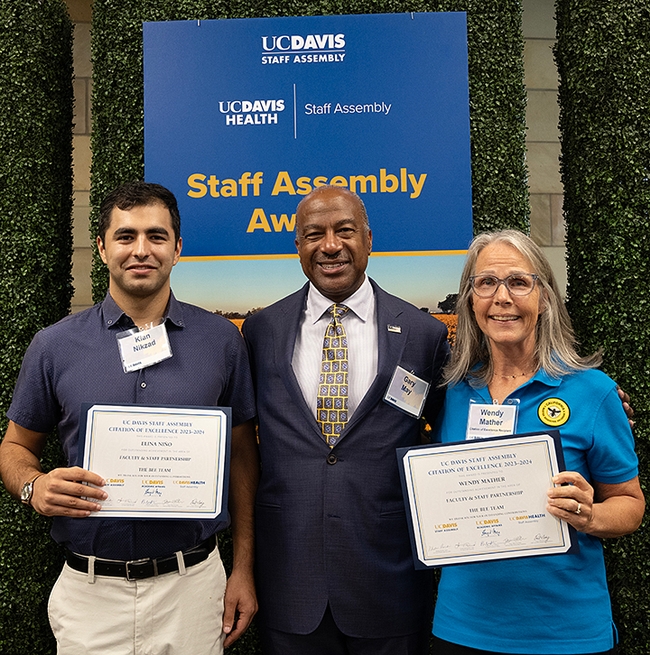
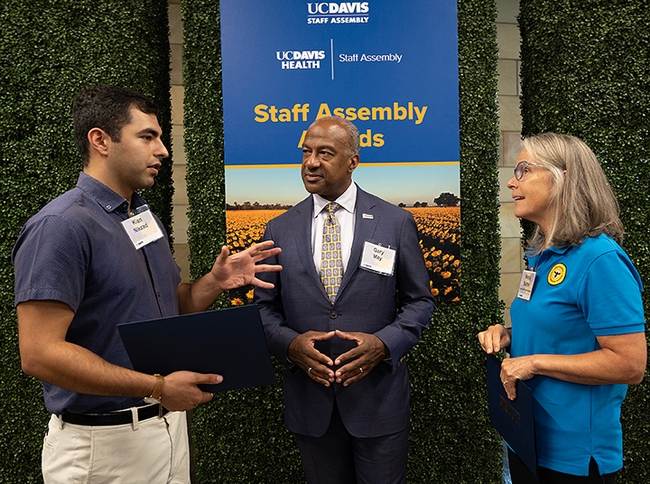
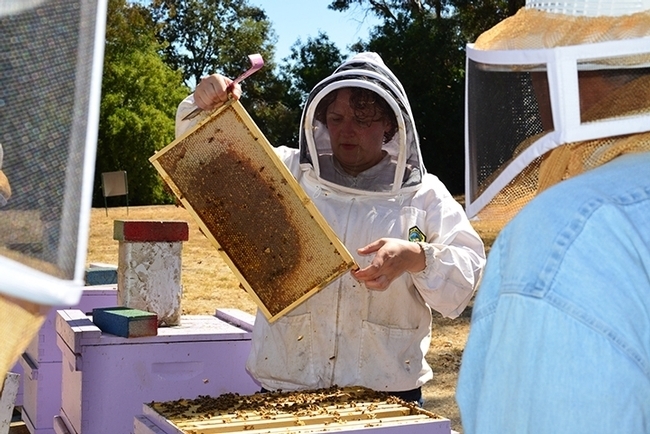
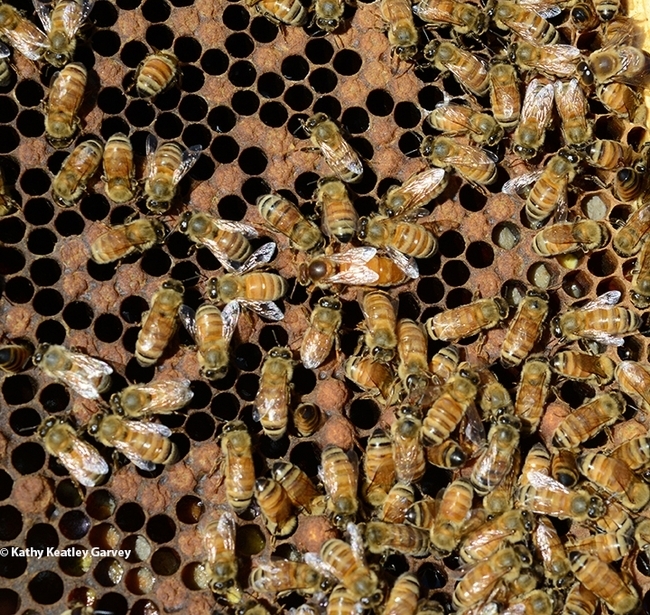
- Author: Kathy Keatley Garvey
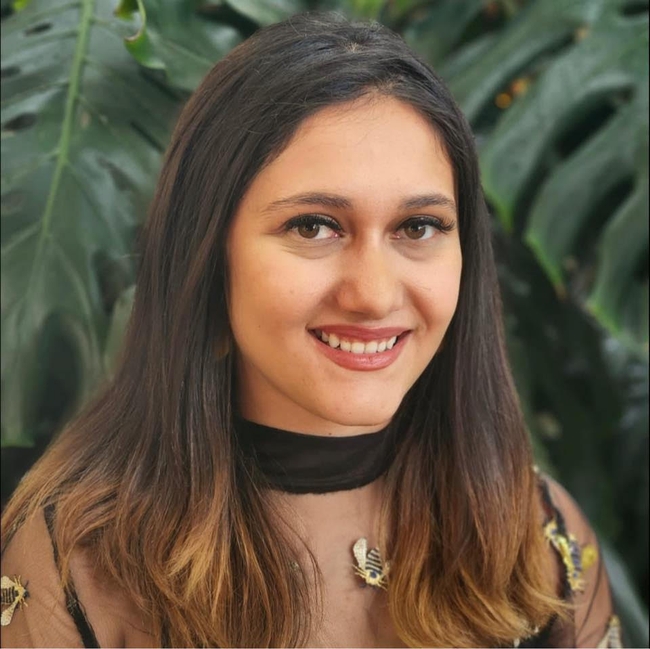
The event, free and family friendly, will take place in Room 1124 of the Academic Surge Building, 455 Crocker Lane, UC Davis. Parking is also free.
Among the presenters will be
- Lynn and Bob Kimsey of the UC Davis Department of Entomology and Nematology faculty. Lynn, a hymenopterist, is a UC Davis distinguished professor who teaches general entomology and the biodiversity of California insects and serves as the director of the Bohart Museum, and Bob is a forensic entomologist, specializing in public health entomology; arthropods of medical importance; zoonotic disease; biology and ecology of tick-borne pathogens; tick feeding behavior and biochemistry.
- Carla-Cristina "CC" Melo Edwards, a first-year doctoral student in the laboratory of medical entomologist-geneticist Geoffrey Attardo, associate professor of entomology, UC Davis Department of Entomology and Nematology. She will share her expertise on mosquitoes and show specimens.
- Moriah Garrison, senior entomologist and research coordinator with Carroll-Loye Biological Research (CLBR). She is scheduled to show live ticks and mosquitoes and field questions.
- Educators from the Sacramento-Yolo Mosquito and Vector Control District. They will discuss mosquitoes and their program
- Nazzy Pakpour, UC Davis alumna, Novozymes scientist and author of Please Don't Bite Me
- Jeff Smith, curator of the Bohart Museum's ;Lepidoptera (butterflies and moths) collection. He will display butterfly specimens collected globally. Also on the "Lep crew" are Bohart volunteers Greg Kareofelas and Brittany Kohler.
CC Edwards. In the Attardo lab, CC focuses her research "on investigating the physiological mechanisms underlying pyrethroid resistance in Aedes aegypti (the yellow fever mosquito)." She was a McNair scholar at Baylor University, where she completed her undergraduate degree in cell and molecular biology in May 2021. "I got interested in the mosquito field through my undergraduate research of studying the sensory and oviposition responses of Aedes aegypti in relation to the compound geosmin."
"I went on to do my masters at Texas Tech University under the advisement of Dr. Corey Brelsfoard where I graduated this past summer (2023)," she said. "I investigated the effects of microplastics in relation to the mosquitoes Aedes aegypti and Aedes albopictus (the Asian tiger mosquito). Plastic pollution has been a worldwide problem and research has shown that microplastics have been found in the guts of various organisms. With Aedes species being container inhabiting species, my master's research was focused on investigating if there are alterations of the mosquitoes' microbiomes and their immunity due to the ingestion of microplastics."
"When I am not in the lab, I enjoy getting involved with my local community by helping out and doing outreach," Edwards said. This past summer she helped the city of Lubbock, Amarillo, and the Texas Public Health Department by identifying mosquitoes for West Nile surveillance. She also served as the outreach chair for the Texas Tech Association of Biologists during her masters' degree pursuit and enjoyed being a mentor for first-generation students.
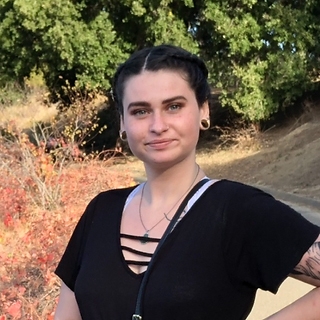
CLBR, involved in insect repellent testing and natural product development, is owned and managed by scientists Scott Carroll and Jenella Loye, a husband-wife team affiliated with UC Davis Department of Entomology an Nematology. Formed in 1989, the company serves the consumer products industry with testing, development and regulatory services for insect repellents, organic products, and low toxicity pesticides. Carroll, president of CLBR, is an evolutionary biologist, while Loye is a medical entomologist and microbiologist. Carroll holds a doctorate in biology/biological sciences from the University of Utah, while Loye holds a doctorate in zoology, microbiology and epidemiology from the University of Oklahoma.
Photography Displays. Professor Attardo, who maintains a lab website on Vector Biology and Reproductive Biology at http://attardo-lab.com, and chairs the Designated Emphasis in the Biology of Vector-Borne Diseases (DEBVBD), will display some of his mosquito images, including a blood-fed Aedes aegypti, and a female and male Culex tarsalis. Alex Wild, a UC Davis doctoral alumnus and curator of entomology, University of Texas, Austin, will display an image of mosquito larvae that currently hangs in Briggs Hall, home of the UC Davis Department of Entomology and Nematology. Wild's insect images can be viewed on his website, https://www.alexanderwild.com.
Petting Zoo. A popular attraction is the live petting zoo; visitors are encouraged to hold or get acquainted with live Madagascar hissing cockroaches and stick insects.
Family Arts and Crafts Activity. The event will be held outside and will highlight two collecting techniques, said Tabatha Yang, education and outreach coordinator.
- Clear Packing Tape Art. "Clear packing tape is a good way to collect small, hard-to-see insects," Yang said. "Glitter will mimic small insects like fleas or bed bugs. Putting the tape on white paper makes it easy to look at them under a microscope and for this craft it will make a pretty card."
- Making insect collecting or "kill" jars. Participants are asked to bring a recycled jar. "This should be a clean and dried glass jar with a wide, metal top--think jam, pickle, peanut butter jars. Four to 16-ounce jars work well. We will have some on hand as well, but recycling is good! We will fill the bottom with plaster of paris and let it dry and teach people how to use it properly, using something like nail polisher remover containing ethyl acetate as the killing agent. A UC Davis Department of Entomology and Nematology video explains the procedure: https://youtu.be/s8yCzFGzbn8?si=71sNmA5l8NyP1zj0
